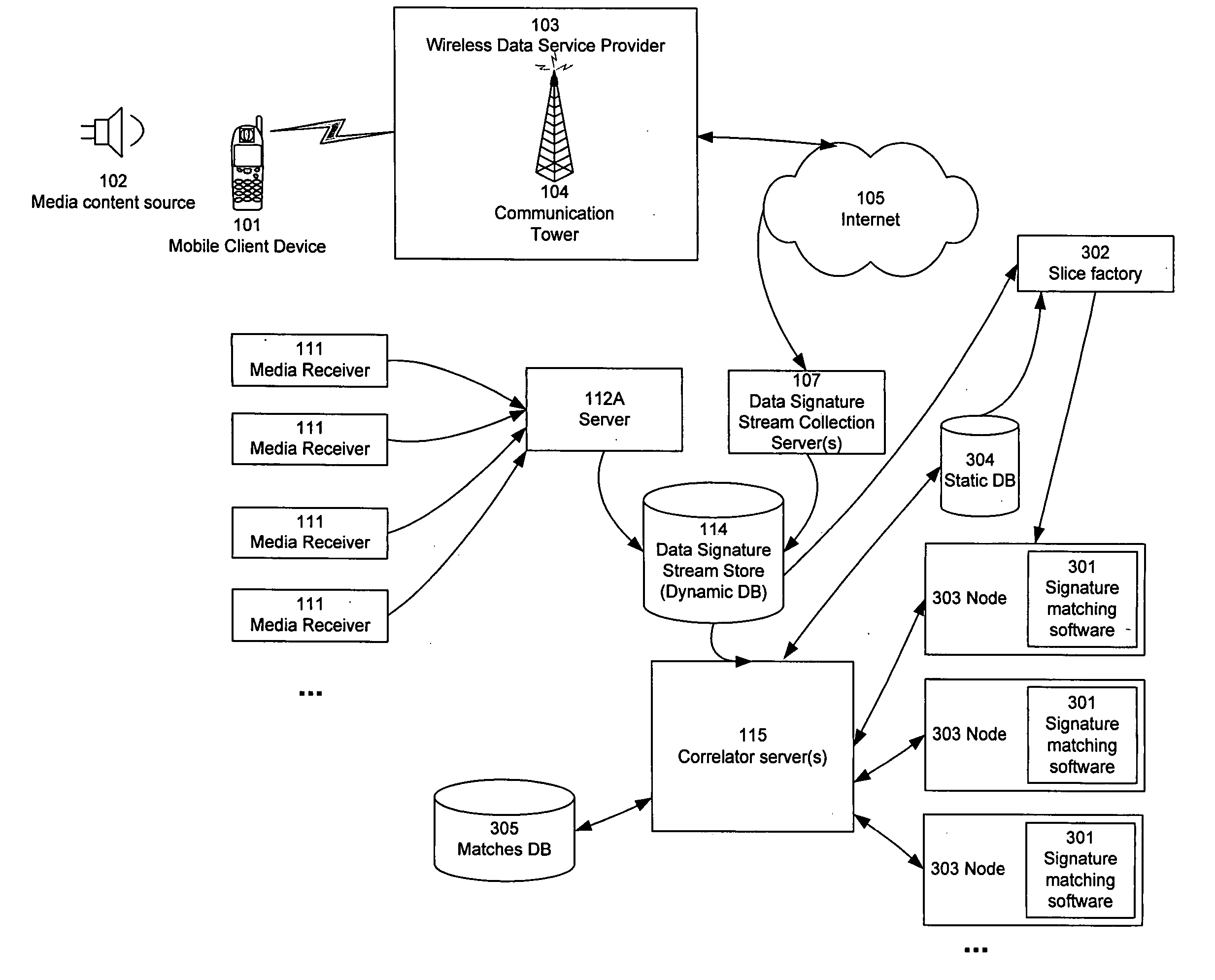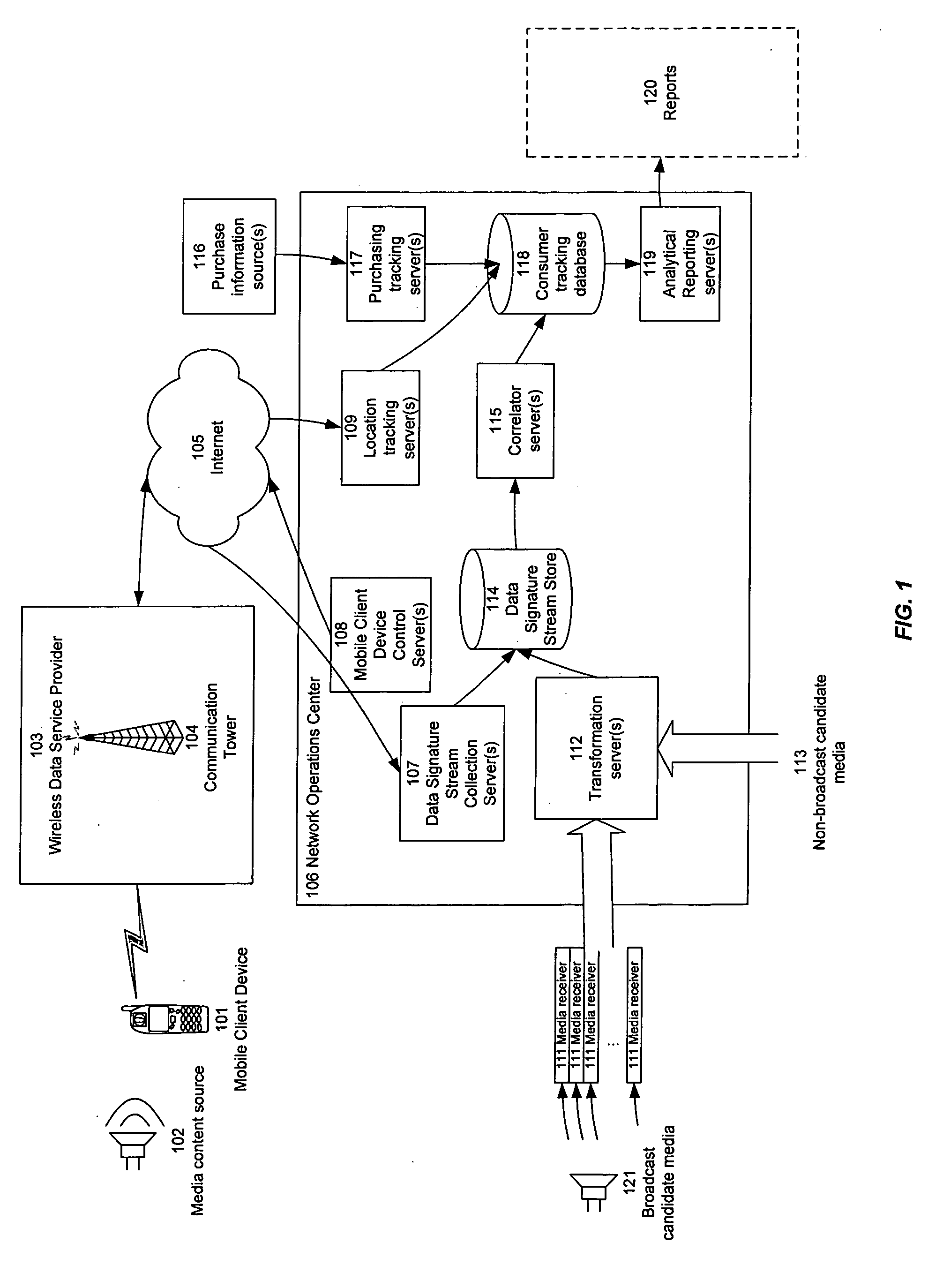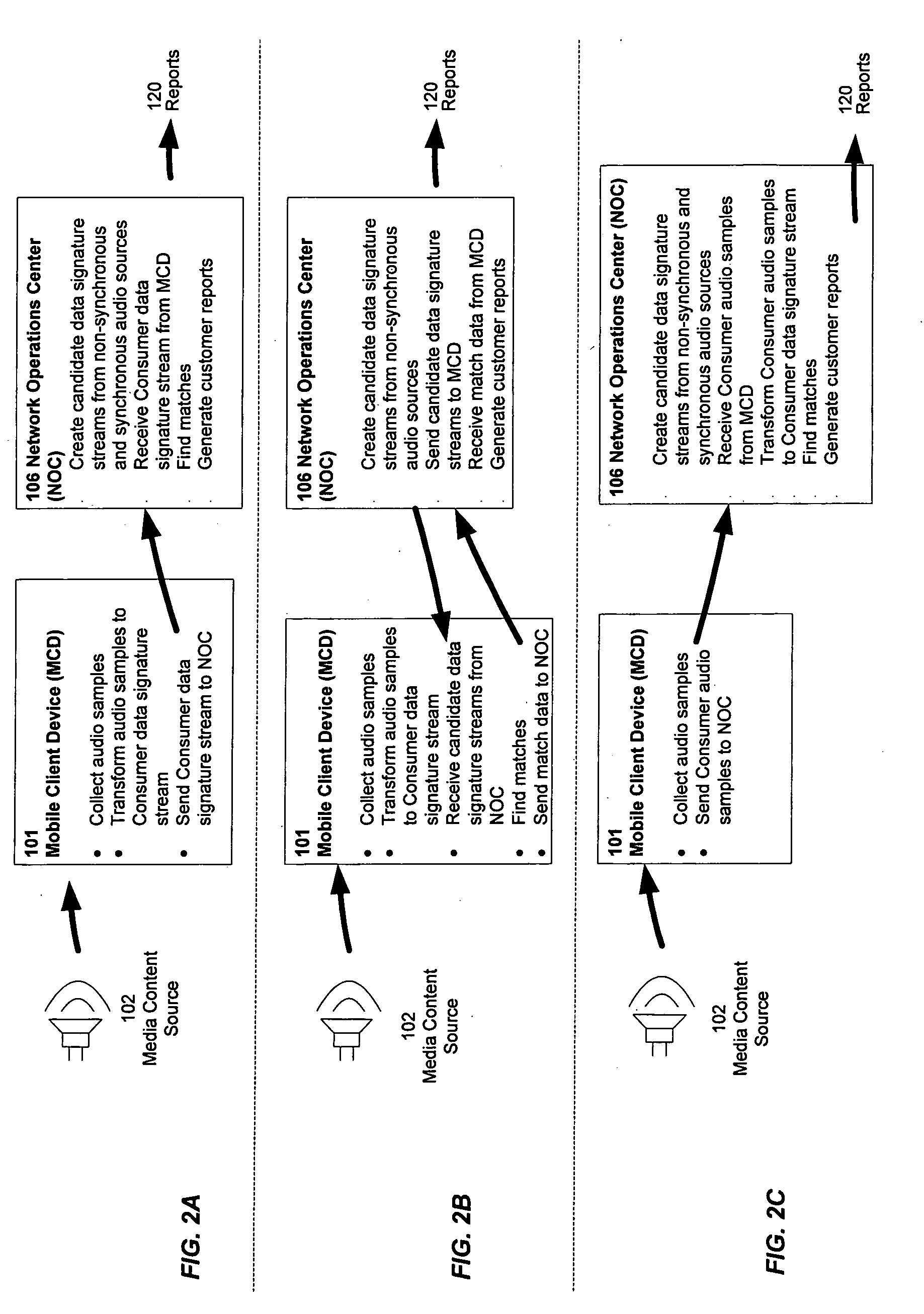Detecting and measuring exposure to media content items
a technology for detecting and measuring exposure to media content items, applied in the field of tracking media consumption, can solve the problems of difficult to determine the overall exposure of (consumption of) a particular content item, and the effectiveness of advertising is typically measured in very broad terms, so as to facilitate better targeting of marketing resources, facilitate the use of convenient carrying, and improve the effect of targeting
- Summary
- Abstract
- Description
- Claims
- Application Information
AI Technical Summary
Benefits of technology
Problems solved by technology
Method used
Image
Examples
Embodiment Construction
[0023] For purposes of the following description, the terms “user”, “consumer”, and “individual” are synonymous and are used interchangeably. The terms “consumption” and “exposure” are also synonymous and are used interchangeably.
[0024] The present invention is now described more fully with reference to the accompanying Figures, in which several embodiments of the invention are shown. The present invention may be embodied in many different forms and should not be construed as limited to the embodiments set forth herein. Rather these embodiments are provided so that this disclosure will be complete and will fully convey the invention to those skilled in the art.
[0025] Referring now to FIG. 1, there is shown a block diagram depicting an overall architecture for implementing the present invention according to one embodiment. Referring also to FIG. 3, there is shown a block diagram depicting a conceptual architecture for implementing the present invention according to one embodiment. ...
PUM
 Login to View More
Login to View More Abstract
Description
Claims
Application Information
 Login to View More
Login to View More - R&D
- Intellectual Property
- Life Sciences
- Materials
- Tech Scout
- Unparalleled Data Quality
- Higher Quality Content
- 60% Fewer Hallucinations
Browse by: Latest US Patents, China's latest patents, Technical Efficacy Thesaurus, Application Domain, Technology Topic, Popular Technical Reports.
© 2025 PatSnap. All rights reserved.Legal|Privacy policy|Modern Slavery Act Transparency Statement|Sitemap|About US| Contact US: help@patsnap.com



